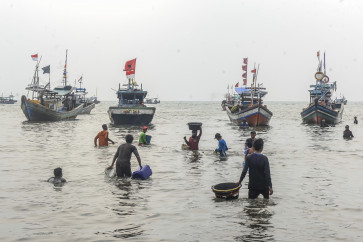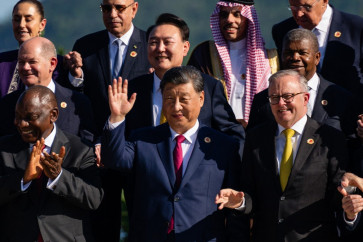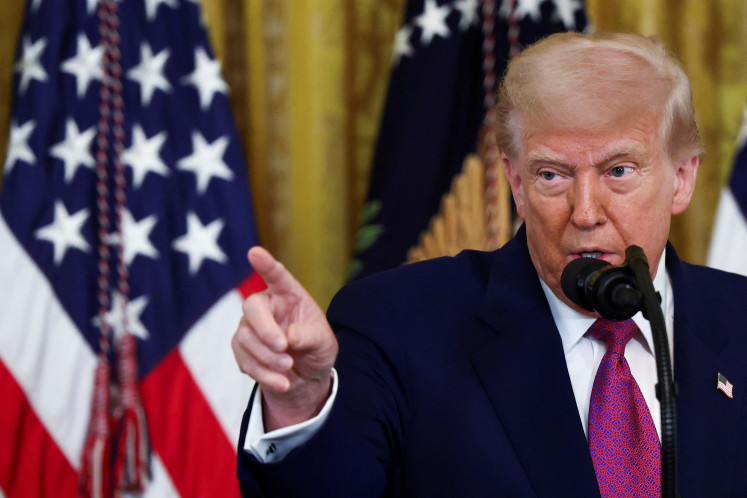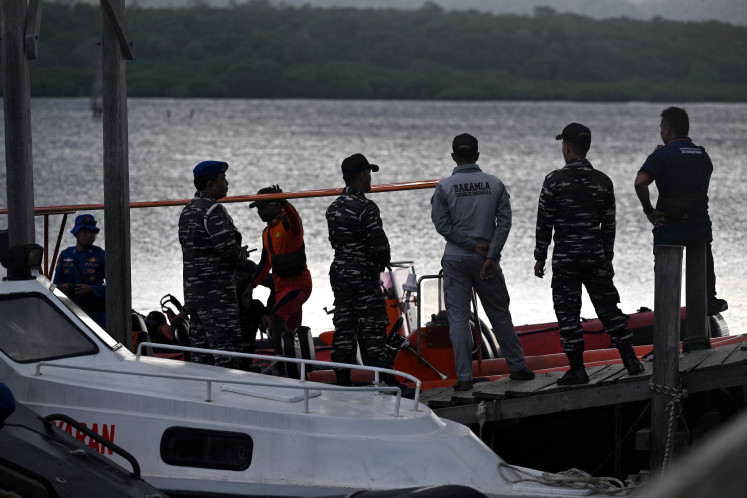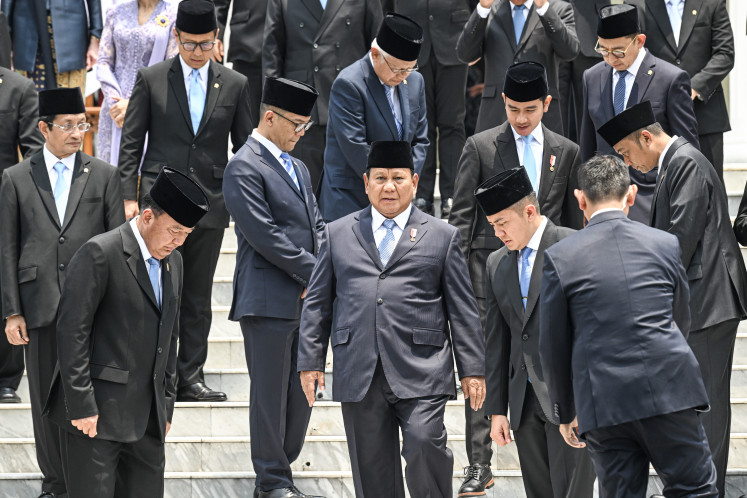Popular Reads
Top Results
Can't find what you're looking for?
View all search resultsPopular Reads
Top Results
Can't find what you're looking for?
View all search resultsA wet debate: Indonesia’s persisting water woes
Desperation: Two boys salvage plastic bottles from the polluted Citarum River in Bojongsoang, Bandung regency, West Java, on Feb
Change text size
Gift Premium Articles
to Anyone
D
esperation: Two boys salvage plastic bottles from the polluted Citarum River in Bojongsoang, Bandung regency, West Java, on Feb. 19. The World Bank declared the Citarum River the most-polluted river in the world a decade ago, a description widely picked up by media and environmentalists.(AFP/Timur Matahari)
UN World Water Day, which falls on Friday, serves as a reminder of Indonesia’s mounting challenges to provide clean water across the archipelago.
Water quality varies across Indonesia. Old timers tell of distant days when rivers were clean and swimming was a joy, not a hazard. Not now. Some households tie muslin around faucets to catch the grit, and they are the lucky ones.
The upturned plastic kegs curiously called galon — though they hold 19 liters, a drop or two over 5 gallons — are a fixture in offices and most middle-class homes.
As tap water is not safe to drink, households are faced with only two choices — buy bottled water or spend big on gas to boil out the bacteria from tap water.
But one island claims to be mining an aquifer that does not need treatment and plans to turn itself into an exporter, challenging the dominant players.
Ruteng is a cool and tiny town 1.2 kilometers up the creased and crumpled Manggarai Highlands of West Flores, East Nusa Tenggara. The area is internationally known for the extinct “hobbits” (Homo floresiensis) discovered in the Liang Bua cave.
Just like the rest of the Lesser Sunda Islands, Flores relies on Java for essentials and tourists for cash.
Ferries and planes from the west come with motorbikes and fuel, household goods and packaged foods, then depart largely empty apart from coffee and returning visitors. How to use that spare cargo space has long puzzled Ruteng businessman Agustinus Willy Djomi. The answer is to export water to Surabaya, East Java, under the trademark Komodo.
“People think Flores is dry, which is true when compared to Java,” he said. “But we have huge underground lakes of pure water.”
“We’ve been pumping and bottling it for 20 years. Now we know there’s enough to export. It comes up around 10 to 15 degrees Celsius and has no impurities. It’s filtered using German equipment but nothing is added.”
His company, PT Nampar Nos, has been extracting 30,000 liters a day and selling throughout Flores under the Ruteng trademark. Its bottles are pressed in the factory using blanks imported from Jakarta. There are about 100 workers, making the company the island’s biggest industrial employer.
However, it is not all pump and profit. Expansion plans have not gone down well with some locals saying lifting production will drain reserves and create droughts.
Djomi refutes the charges, pointing to many private shallow wells around the town and the vagaries of weather for irregular shortages.
The Indonesian market is dominated by Aqua produced by Paris-based multinational food product corporation Danone. Aqua has become a synonym for bottled water, whatever the brand.
If the Ruteng product can get a cool place on Java’s supermarket shelves, Flores will move from importer to exporter. That will be a tough task even with a gimmicky name. Komodo Dragons are stinking beasts so linking them to clean water could be risky. But maybe oxymorons attract.
Despite the dramatic increase of Indonesians’ average income in the last 20 years, many are still grappling to get clean water — which has resulted in numerous health problems.
Twelve percent of the population still lacks access to water in their homes, meaning it has to be carried from a village well or standpipe.
A UNICEF report claims 150,000 Indonesian children die every year through preventable diarrhea. A 2015 survey in Yogyakarta showed two-thirds of water samples were contaminated with fecal bacteria.
Despite the extension of pipelines by regional water companies, more than 30 percent is lost through leaks, according to Indonesian research.
So even if you want to save the world by rejecting plastic bottles, in Indonesia saving your family’s wellbeing might be the more immediate priority.



